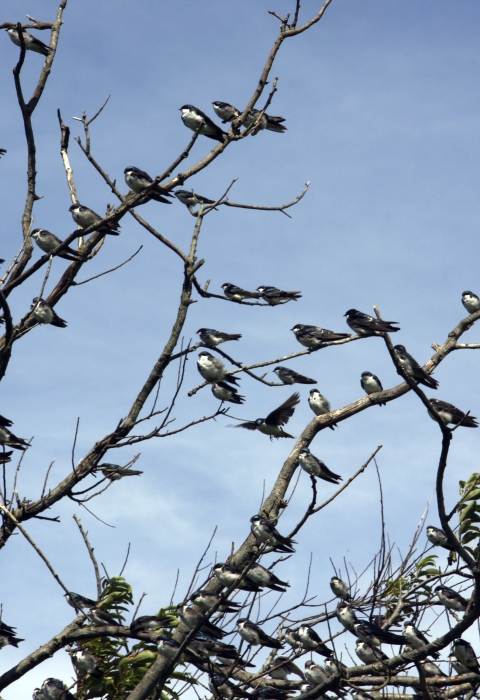The Sachuest Point Visitor Center will be closed 12/25 and 1/1. The Visitor Center will close at 12:30pm on 12/24 and 12/31. The trails and the single restroom will remain open sunrise-sunset.
Visit Us
Hours of Operation (Trails)
The trails at Sachuest Point National Wildlife Refuge are open from sunrise to sunset. A single bathroom is available on the side of the Visitor Center from 6:30am-4:30pm.
Flint Point Loop Trail is a 1.1 mile loop, mild terrain through coastal shrublands. The loop and Island Rocks platform are universally accessible. Flint point can be reached via a 0.6 mile in-and-out trail on the northwest side of the loop. Ocean View Loop is 1.5 miles with medium terrain and fantastic views of the ocean and rocky shoreline. From Ocean Loop you can access Price Neck Overlook, which is a short in-and-out trail with steep, rugged terrain. At Price Neck Overlook (and on much of the eastern portion of Ocean Loop), step on ancient rocks which used to be part of the African Continent. The Sakonnet Overlook is an accessible platform located near the parking lot which gives visitors a beautiful view of the wildlife refuge and the Sakonnet River.
Hours of Operation (Visitor Center)
The Visitor Center is open daily from 10:00am-3:00pm, and includes exhibits, more restrooms, water fountains, and a gift shop operated by the Friends of the Rhode Island Refuges.
Fishing Permits
Please visit our fishing page to learn more about obtaining your fishing permit.
Job, Internship and Volunteer Opportunities
Please visit our Get Involved page to learn how to join our team.
Contact Us
Questions? Please call (401) 619-2680, or email rhodeislandcomplex@fws.gov
Related Documents
Other Facilities in the Complex
Rules and Policies
Because all National Wildlife Refuges were established for the protection of wildlife, activities that are not wildlife dependent (those that do not require the presence of wildlife or that pose a threat to wildlife) are not permitted.
Locations
Email rhodeislandcomplex@fws.gov with questions.







